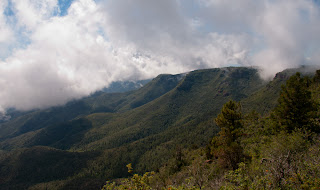 |
| driving into Sedona |
 |
| site at Distant Drums |
 |
| Carol shopped - Tom relaxed at Tlaquepaque |
 |
| Page Springs/Bubbling Ponds |
 |
| Buckeye |
 |
| Cicada were out in force |
Fish Hatchery. Added: Common Black Hawk, Anna’s Hummingbird, Acorn and Gila Woodpeckers, Bridled Titmouse, Phainopepla, Abert’s Towhee and Lazuli Bunting.
 |
| Red Rock State Park |
 |
| Red Rock State Park |
The next morning Inclement weather kept us pinned down. A convenient time to get caught up on laundry. Just over I-17 was the Cliff Castle Casino. We’re not casino going folks but they had on their menu a very inexpensive breakfast which we took advantage of as we were feeling particularly lazy. By mid-afternoon the weather had cleared enough for visits to Montezuma Castle National Monument and nearby Montezuma Well.
 |
| Montezuma Castle |
 |
| Sycamores |
Pueblo-like cliff dwellings. Several Hopi clans trace their ancestral roots back to the Sinaguas. The cliff dwelling ruins were a good deal smaller and not at all accessible as those we toured at Mesa Verde.
 |
| Montezuma Well - note cliff dwellins |
 |
| restored irrigation ditch remnant |
 |
| irrigation info |
 |
| shrouded Mingus Mountain |
 |
| leap of faith from hang glider launch - sail to the Cottonwood Airport |
 |
| hang glider flight path map |
 |
| Jerome, Arizona - narrow and tight streets |
 |
| sage advise |
 |
| Haunted Hamburger special |
 |
| Jerome Grand Hotel |
 |
| a small sample of Jerome Ghost Pepper offerings |
 |
| Hmmmmm.... |
 |
| Tuzigoot ruins |
 |
| Flame Skimmer |
 |
| is Harry Potter missing something? |
 |
| scenery along Oak Creek Canyon |
 |
| view from summit looking back down the canyon |
But wait, there was more to the day. After a few failed attempts we finally honed in on the location of the Amitabha Stupa and Peace Park where we inspected a 36-foot stupa meant to inspire prayer, meditation, healing and peace. The site is also known as a local birding hot spot so as we sat and meditated we kept our binoculars near (nothing new appeared in spite of all the good karma).
 |
| Amitabha Stupa |
 |
| Peace Park |
 |
| view from airport overlook |
 |
| Chapel of the Holy Cross - Courthouse Butte in distance |
 |
| Courthouse Butte |
On our last full day in the area, we included a visit to Dead Horse Ranch State Park. We hiked a couple of park trails, one of which bordered the Verde River. The state park hosts the annual "Verde Birding and Nature Festival" (known as “Verde Birdy) held every April. As we were already close to Tavasci Marsh, we made a short detour to see it, but wound up looking from afar. It would have been a long a hike to get nearer and the day had already begun to heat up. Besides that's why we have binoculars, right? The rest of our day was spent prepping for our next move to more familiar territory in southeastern AZ.
 |
| Tavasci Marsh |
 |
| Tom and Carol - Sedona 2012 |
 |
| Verde Birding Trail Map |
 |
| cloud bound on Mingus Mountain |
 |
| sign was for a black bear display but, hey... |
 |
| Great Earless Lizard |





You got a lot in on your visit & on your post! Nice post on Sedona.
ReplyDelete